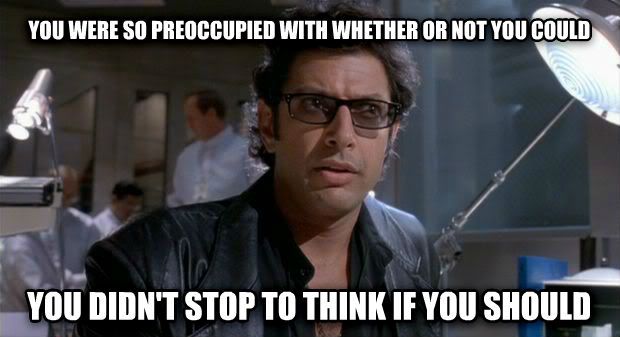It’s a long-held belief at Yell that it’s difficult for established organisations to be truly customer centric.
Not when they have to deliver shareholder value. However, all organisations can continually strive to be more customer centric. And here’s how.
1. Help your customers reach their goals
This is the big one.
For your organisation to be truly customer-centric, the products or services you provide should be created to help your customers achieve their goals. Not just make a profit for your company.
However, for most of us, changing the product mix of our firm is generally out of reach. What you can influence, is your marketing culture and focus on providing satisfaction around specific customer needs and goals.
For example, whenever you create a page of web content, think about the need that it fulfills for your audience. Be specific, think of their needs, not yours.
Remember, it’s not your metric that they are looking to complete, it’s their task. The secret sauce is when you can align both their needs and your outcomes, but you must always start with customer. A great example is a content campaign, based around an e-book. You may want to tell everyone about your product’s great features, but your customers want to read a guide as to how they can do something that will benefit them.
Your goal is to get their details, their goal is to receive value through knowledge. If you achieve the latter, you’ll achieve the former.
Then you’ll need to think about their next step and help them achieve their original goal, but that’s another story.
By taking a customer-centric, task-based view on everything you build, you will consistently be providing a customer centric experience. Really, that’s it. We could pack up and go home now. But we won’t. One point does not a listicle make.
2. Help people make decisions
The huge amount of choice and information available to customers means that they want, and have, more control in making purchase decisions.
Customers don’t want to be sold to or manipulated by salespeople. Instead, they want to be understood and empowered to choose offerings that enable them to achieve desired outcomes.
Guiding people towards understanding their choices and making the right decision for them should be a key objective of your marketing. If you believe in your product, this shouldn’t be a scary thought. It might mean that they make the decision that your product or service is not right for them, and that’s OK.
3. Really talk to your customers
We’re not simply talking about satisfaction surveys, or tracking Net Promoter. Although these metrics can be useful, they should only be a part of the equation. The issue with just using data is that it doesn’t answer the question of ‘why’ your customers respond or behave the way they do.
Instead, we encourage you to have real, face-to-face structured conversations with your customers to help you understand the underlying motivations behind their decisions.
If possible, we’d also encourage you to search further afield than the usual default of talking to people who work in CBDs in capital cities – go to them, don’t always have them come to you. Ensure your sample of interviewees is truly representative of your customer base. 28% of Australian residents were born overseas, and a similar amount speak a language other than English at home. If your customer base is this diverse, then to understand them you should ensure that your interview sample is too.
Hearing straight from customers – both the good and the bad – can be a reality check for any organisation as to what people really think. We acknowledge that it’s time consuming and can also expose you to a relatively small sample size upon which to make informed decisions. But, some of the best insights we’ve uncovered have come from anecdotal conversations with customers. It’s definitely worth the investment of your time.
4. Document your customers’ experiences. And learn from them
Once you’ve gained your customer insights, ideally from a mix of small-scale qualitative research and wider-reaching quantitative research, the next stage is to capture them.
There are several standard formats to help do this, and each aims to ensure that the information is recorded logically, making new opportunities easy to identify.
Customer journey maps are a great place to start. They document your customers’ interactions, from first becoming aware of your brand or product, to making a purchase decision, and actually becoming a customer. They enable us to understand what was good, what was not so good and the emotions that customers feel at each stage.
By doing this, we can see what their needs are at each interaction, how well your organisation is meeting them, and where opportunities for improvement lie.
Customer journey maps work best if the existing experience is first audited and documented, to show the current state of play. A second ‘ideal’ journey of how customer needs could best be met can created then be created. This should detail an ideal, but realistic, set of interactions that will help your customers achieve their goals. By comparing the two customer journeys, a roadmap can be developed to create the interactions that will help your customers achieve their goals.
5. Plan your new experience
The scope of a full customer experience strategy can be huge, potentially involving a whole organisation and encapsulating everything from back office systems to company culture.
As a marketer or CX professional, it’s a lot easier to begin your journey of building the ideal customer experience with one interaction rather than dealing with macro problems. This allows us to test the methodology and show that a customer-centric approach delivers results – both in terms of customer satisfaction and the bottom line.
Depending on your business, this could be taking a customer-centric approach to:
- Onboarding a new customer
- Making an insurance claim
- Helping people decide which investment product is right for them
We call this iX – interaction experience strategy – and identifying which interaction to first apply a customer-centric approach to often comes out of the customer journey process. This can help identify which interaction is going to move the needle most for your customers, and for your business.
6. Say no to ideas that don’t fit with the customer-centric strategy
It’s easy to get excited about new ideas. New technologies that you can add to interactions, new services, or a new idea that could create an additional revenue stream.
But it’s important to recognise that achieving customer-centricity requires laser-sharp focus. Additional ideas that aren’t contributing to the customer-centric strategy risk diluting this focus and compromising the commitment to the growth that centricity will bring.
Is anyone really crying out for Bankwest’s recently launched ‘Halo’ touchless ring?
Or, could the effort and budget that went into this project have been used to deliver solutions that met a genuine customer need?
As Jeff Goldblum so memorably stated in Jurassic Park:

7. Create a customer-centric culture
Being customer-centric shouldn’t be something that just the marketing team cares about. Or the product team. Or the customer service team. It should be something that every member at your organisation understands the value of and commits to.
However, while it’s great to think that this should be the case, to begin with it’s easiest to start with those we have immediate contact with – you and your team.
As marketers, we are the voice of the customer within an organisation. To do that successfully that we all need to understand and empathise with our customers. For any effort to be successful, it’s important that the whole team is engaged and involved. This could be as simple as:
- Everyone is given the opportunity to attend research, even if just as an observer
- Team members are assigned personas to be advocates for, and ensure that their persona’s needs are met
A core objective of building a customer-centric culture within the marketing function should also be to demonstrate to senior management the business benefits that it brings to the organisation. And if the leadership team truly get on board with customer-centricity (beyond just it being a ‘value’ on a website ‘about us’ page) and set a customer-focused culture from the top down they’ll be giving your whole organisation’s permission to put people before short-term profit. And when you do that, everyone benefits – customers and the bottom-line.
Are you ready to take the first step?
If you’d like to talk to us about how you can take the first step to being more customer-centric by focusing on a specific interaction, then we’d love to talk to you.
Find out how our iX approach delivers outcomes that meets customers’ needs and delivers on hard business metrics.








